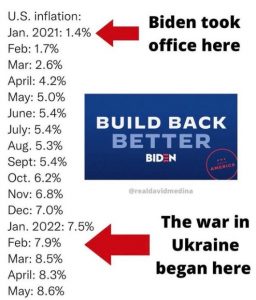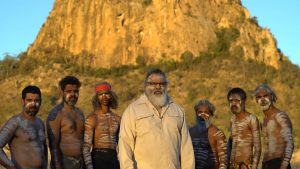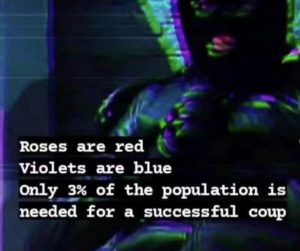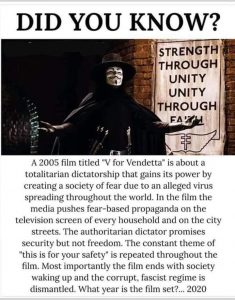
False Data Correction In the interests of truth and sanity…

Standing Our Ground – Our Declaration

Our continued sacred ceremony, called the Waddananggu, confirms our connection to Country and our presence is evidence that our rights and interests have never been abandoned, lost or signed away in any Indigenous land use or cultural heritage agreements, or mining lease.
We are calling on supporters to stand with us by demanding that your governments recognise the original sovereignty in the land, the source of our laws and customs, and enter into treaties with us as the rightful custodians of Country.
Read the full Declaration and find out how you can support at the link in our bio.
Alien Abduction or Rescue Mission?

Feds Recommend 30 Years for Ghislaine Maxwell as All of Her Politician Billionaire Clients Walk Free

Like the federal case, the NY Times article stopped short of inquiring about any of the other clients besides Epstein, facilitating a massive miscarriage of justice and a kick in the teeth to the dozens of child victims abused by global elite visiting Epstein’s child rape island on the Lolita Express.
As of yet, the only person on that client list to be named publicly — subsequently paying out millions of dollars to an alleged victim — is Prince Andrew, who is not a US citizen.
Andrew was sued for the sexual assault of Virginia Giuffre, a girl trafficked by Epstein and Maxwell while she was under the age of consent. The case was settled out of court in February, with Andrew making a “substantial donation” to Giuffre’s charity supporting the rights of victims of sexual abuse.
But hundreds of other public figures, ranging from Hollywood actors and musicians to high-profile politicians, are known to have associated with Epstein, including former president Bill Clinton, who flew on the financier’s plane, the ‘Lolita Express’, to his private island at least 26 times, as well as Donald Trump, Bill Gates, former Senator John Glenn, former Senate Majority Leader George Mitchell, actors Kevin Spacey and Chris Tucker and violinist Itzhak Perlman, who are also reported to have made the same trip.
The ‘3.5% rule’: How a small minority can change the world


In 1986, millions of Filipinos took to the streets of Manila in peaceful protest and prayer in the People Power movement. The Marcos regime folded on the fourth day.
In 2003, the people of Georgia ousted Eduard Shevardnadze through the bloodless Rose Revolution, in which protestors stormed the parliament building holding the flowers in their hands. While in 2019, the presidents of Sudan and Algeria both announced they would step aside after decades in office, thanks to peaceful campaigns of resistance.
In each case, civil resistance by ordinary members of the public trumped the political elite to achieve radical change.
There are, of course, many ethical reasons to use nonviolent strategies. But compelling research by Erica Chenoweth, a political scientist at Harvard University, confirms that civil disobedience is not only the moral choice; it is also the most powerful way of shaping world politics – by a long way.
Looking at hundreds of campaigns over the last century, Chenoweth found that nonviolent campaigns are twice as likely to achieve their goals as violent campaigns. And although the exact dynamics will depend on many factors, she has shown it takes around 3.5% of the population actively participating in the protests to ensure serious political change.
Chenoweth’s influence can be seen in the recent Extinction Rebellion protests, whose founders say they have been directly inspired by her findings. So just how did she come to these conclusions?
Needless to say, Chenoweth’s research builds on the philosophies of many influential figures throughout history. The African-American abolitionist Sojourner Truth, the suffrage campaigner Susan B Anthony, the Indian independence activist Mahatma Gandhi and the US civil rights campaigner Martin Luther King have all convincingly argued for the power of peaceful protest.
Yet Chenoweth admits that when she first began her research in the mid-2000s, she was initially rather cynical of the idea that nonviolent actions could be more powerful than armed conflict in most situations. As a PhD student at the University of Colorado, she had spent years studying the factors contributing to the rise of terrorism when she was asked to attend an academic workshop organised by the International Center of Nonviolent Conflict (ICNC), a non-profit organisation based in Washington DC. The workshop presented many compelling examples of peaceful protests bringing about lasting political change – including, for instance, the People Power protests in the Philippines.
But Chenoweth was surprised to find that no-one had comprehensively compared the success rates of nonviolent versus violent protests; perhaps the case studies were simply chosen through some kind of confirmation bias. “I was really motivated by some skepticism that nonviolent resistance could be an effective method for achieving major transformations in society,” she says
Working with Maria Stephan, a researcher at the ICNC, Chenoweth performed an extensive review of the literature on civil resistance and social movements from 1900 to 2006 – a data set then corroborated with other experts in the field. They primarily considered attempts to bring about regime change. A movement was considered a success if it fully achieved its goals both within a year of its peak engagement and as a direct result of its activities. A regime change resulting from foreign military intervention would not be considered a success, for instance. A campaign was considered violent, meanwhile, if it involved bombings, kidnappings, the destruction of infrastructure – or any other physical harm to people or property.
“We were trying to apply a pretty hard test to nonviolent resistance as a strategy,” Chenoweth says. (The criteria were so strict that India’s independence movement was not considered as evidence in favour of nonviolent protest in Chenoweth and Stephan’s analysis – since Britain’s dwindling military resources were considered to have been a deciding factor, even if the protests themselves were also a huge influence.)
By the end of this process, they had collected data from 323 violent and nonviolent campaigns. And their results – which were published in their book Why Civil Resistance Works: The Strategic Logic of Nonviolent Conflict – were striking.
Strength in numbers
Overall, nonviolent campaigns were twice as likely to succeed as violent campaigns: they led to political change 53% of the time compared to 26% for the violent protests.
This was partly the result of strength in numbers. Chenoweth argues that nonviolent campaigns are more likely to succeed because they can recruit many more participants from a much broader demographic, which can cause severe disruption that paralyses normal urban life and the functioning of society.
In fact, of the 25 largest campaigns that they studied, 20 were nonviolent, and 14 of these were outright successes. Overall, the nonviolent campaigns attracted around four times as many participants (200,000) as the average violent campaign (50,000).
The People Power campaign against the Marcos regime in the Philippines, for instance, attracted two million participants at its height, while the Brazilian uprising in 1984 and 1985 attracted one million, and the Velvet Revolution in Czechoslovakia in 1989 attracted 500,000 participants.
“Numbers really matter for building power in ways that can really pose a serious challenge or threat to entrenched authorities or occupations,” Chenoweth says – and nonviolent protest seems to be the best way to get that widespread support.
Once around 3.5% of the whole population has begun to participate actively, success appears to be inevitable.
Besides the People Power movement, the Singing Revolution in Estonia and the Rose Revolution in Georgia all reached the 3.5% threshold
“There weren’t any campaigns that had failed after they had achieved 3.5% participation during a peak event,” says Chenoweth – a phenomenon she has called the “3.5% rule”. Besides the People Power movement, that included the Singing Revolution in Estonia in the late 1980s and the Rose Revolution in Georgia in the early 2003.
Chenoweth admits that she was initially surprised by her results. But she now cites many reasons that nonviolent protests can garner such high levels of support. Perhaps most obviously, violent protests necessarily exclude people who abhor and fear bloodshed, whereas peaceful protesters maintain the moral high ground.
Chenoweth points out that nonviolent protests also have fewer physical barriers to participation. You do not need to be fit and healthy to engage in a strike, whereas violent campaigns tend to lean on the support of physically fit young men. And while many forms of nonviolent protests also carry serious risks – just think of China’s response in Tiananmen Square in 1989 – Chenoweth argues that nonviolent campaigns are generally easier to discuss openly, which means that news of their occurrence can reach a wider audience. Violent movements, on the other hand, require a supply of weapons, and tend to rely on more secretive underground operations that might struggle to reach the general population.
By engaging broad support across the population, nonviolent campaigns are also more likely to win support among the police and the military – the very groups that the government should be leaning on to bring about order.
During a peaceful street protest of millions of people, the members of the security forces may also be more likely to fear that their family members or friends are in the crowd – meaning that they fail to crack down on the movement. “Or when they’re looking at the [sheer] numbers of people involved, they may just come to the conclusion the ship has sailed, and they don’t want to go down with the ship,” Chenoweth says.
In terms of the specific strategies that are used, general strikes “are probably one of the most powerful, if not the most powerful, single method of nonviolent resistance”, Chenoweth says. But they do come at a personal cost, whereas other forms of protest can be completely anonymous. She points to the consumer boycotts in apartheid-era South Africa, in which many black citizens refused to buy products from companies with white owners. The result was an economic crisis among the country’s white elite that contributed to the end of segregation in the early 1990s.
Nonviolent protests are more likely to attract support from across society. Here a pro-reform protestor faces security forces in Morocco in 2011 (Credit: Getty Images)
“There are more options for engaging and nonviolent resistance that don’t place people in as much physical danger, particularly as the numbers grow, compared to armed activity,” Chenoweth says. “And the techniques of nonviolent resistance are often more visible, so that it’s easier for people to find out how to participate directly, and how to coordinate their activities for maximum disruption.”
A magic number?
These are very general patterns, of course, and despite being twice as successful as the violent conflicts, peaceful resistance still failed 47% of the time. As Chenoweth and Stephan pointed out in their book, that’s sometimes because they never really gained enough support or momentum to “erode the power base of the adversary and maintain resilience in the face of repression”. But some relatively large nonviolent protests also failed, such as the protests against the communist party in East Germany in the 1950s, which attracted 400,000 members (around 2% of the population) at their peak, but still failed to bring about change.
In Chenoweth’s data set, it was only once the nonviolent protests had achieved that 3.5% threshold of active engagement that success seemed to be guaranteed – and raising even that level of support is no mean feat. In the UK it would amount to 2.3 million people actively engaging in a movement (roughly twice the size of Birmingham, the UK’s second largest city); in the US, it would involve 11 million citizens – more than the total population of New York City.
The fact remains, however, that nonviolent campaigns are the only reliable way of maintaining that kind of engagement.
A couple commemorate the Velvet Revolution of 1989, which helped bring down Communist rule in Czechoslovakia – another example of Chenoweth’s “3.5% rule” (Credit: Getty Images)
Chenoweth and Stephan’s initial study was first published in 2011 and their findings have attracted a lot of attention since. “It’s hard to overstate how influential they have been to this body of research,” says Matthew Chandler, who researches civil resistance at the University of Notre Dame in Indiana.
Isabel Bramsen, who studies international conflict at the University of Copenhagen agrees that Chenoweth and Stephan’s results are compelling. “It’s [now] an established truth within the field that the nonviolent approaches are much more likely to succeed than violent ones,” she says.
Regarding the “3.5% rule”, she points out that while 3.5% is a small minority, such a level of active participation probably means many more people tacitly agree with the cause.
These researchers are now looking to further untangle the factors that may lead to a movement’s success or failure. Bramsen and Chandler, for instance, both emphasize the importance of unity among demonstrators.
As an example, Bramsen points to the failed uprising in Bahrain in 2011. The campaign initially engaged many protestors, but quickly split into competing factions. The resulting loss of cohesion, Bramsen thinks, ultimately prevented the movement from gaining enough momentum to bring about change.
Chenoweth’s interest has recently focused on protests closer to home – like the Black Lives Matter movement and the Women’s March in 2017. She is also interested in Extinction Rebellion, recently popularised by the involvement of the Swedish activist Greta Thunberg. “They are up against a lot of inertia,” she says. “But I think that they have an incredibly thoughtful and strategic core. And they seem to have all the right instincts about how to develop and teach through a nonviolent resistance campaigns.”
Ultimately, she would like our history books to pay greater attention to nonviolent campaigns rather than concentrating so heavily on warfare. “So many of the histories that we tell one another focus on violence – and even if it is a total disaster, we still find a way to find victories within it,” she says. Yet we tend to ignore the success of peaceful protest, she says.
“Ordinary people, all the time, are engaging in pretty heroic activities that are actually changing the way the world – and those deserve some notice and celebration as well.”
David Robson is a senior journalist at BBC Future. Follow him on Twitter: @d_a_robson.
https://www.bbc.com/future/article/20190513-it-only-takes-35-of-people-to-change-the-world
Luongo: Russia’s New Rules
94 Percent of Medication Not Supported by High-Quality Evidence, Harms Underreported: Study

(Tom: I had wondered about this some time ago, for all the conditions for which medication is of assistance, is the average result from medication not detrimental.)
Less than 6 percent of medical drugs have high-quality evidence to support their benefits, according to a recent study by the University of Oxford.
The study found that, of the 1,567 eligible medications approved under the Cochrane Reviews from 2008 to 2021, more than 94 percent were not supported by high-quality evidence.
Cochrane Reviews is a leading international journal and database combining all available and relevant evidence about treatments and health care policies. It is often referenced in national and international health care guidelines, and is especially prominent in Europe.
Reviewing Cochrane Reviews’ 35 percent of research papers, researchers found less than half of the drugs approved from 2008 to 2021 had moderate to high-quality evidence. Further, harms were underreported, with around 37 percent of interventions found with harm and 8.1 percent had significant evidence of harm.
“It is particularly worrying that the harms of healthcare interventions are rarely quantified,” wrote Dr. Jeremy Howick, one of the co-authors of the study, in The Conversation.
“For a doctor or patient to decide whether to use a treatment, they need to know whether the benefits outweigh the harms. If the harms are inadequately measured, an ‘informed choice’ is not possible.”
According to Howick, the “cut-off” year was 2008, as that was when Cochrane Reviews incorporated a system called grading quality of evidence and strength of recommendations (GRADE) to assess the quality of evidence.
The GRADE system used by Cochrane, is a transparent framework for developing and presenting summaries of evidence and provides a systematic approach for making clinical practice recommendations.
It is a widely adopted tool for grading the quality of evidence and for making recommendations with over 100 organizations worldwide endorsing GRADE.
Although authors of the Oxford study speculated that the poor findings for drugs backed up by high-quality evidence may be because the sample studies were “unrepresentative” of the population, Howicks argued that it was unlikely given the strictness of Cochrane Reviews.
A 2020 U.S. study published in JAMA also indicated the problem of medications being approved without rigorous testing and causing harm. The study examined drugs approved by the Food and Drug Administration from 1983 to 2018 and found that whilst the number of novel biologics approved increased, the review period by the organization decreased.
The authors wrote in the study that, the FDA “increasingly accepted less data and more surrogate measures,” clinical measures that show a correlation but may not necessarily guarantee a relationship.
Dr. David Light from Harvard University argued that currently, 80 percent of drugs being prescribed that are known to work are still generic drugs, with experienced physicians recommending to not take new drugs for at least five years.
Light wrote in his 2014 article that the majority of newly approved drugs bring little to no improvements, with 1 in 5 new prescriptions causing severe adverse events. At the same time, pharmaceutical prices for new drugs have soared with drug median release prices growing 85 times higher from 2008 to 2022.
“Potential harms should be measured with the same rigor as potential benefits,” concluded Howick. “The evidence-based medicine community is correct to continue calling for higher-quality research, and also justified in their skepticism that high-quality evidence for medical treatments is common or even improving.”
Let Freedom Be Your Goal!

Freedom is a senior goal to safety. There can never be complete safety, what with storms, volcanoes, earthquakes, tornadoes, hurricanes, blizzards etc. And it could be argued that without freedom there is no life, for what is life but choosing a path and following it? Without being free to do that, do you have a life?
After the last two year when suicides climbed steeply, obviously many decided, “No.” in answer to that question.
Let’s more of us learn from that mistake and ensure it is never repeated. Never relinquish a freedom for a promised safety or security. It is a deadly trade-off.
The COVID-19 Vaccine Is Safe And Effective!

Interesting when you look at how the narrative has altered over time yet some propagandists still claim vaccines are safe and effective.

